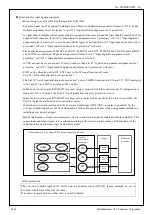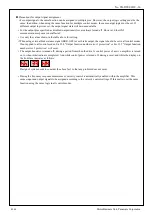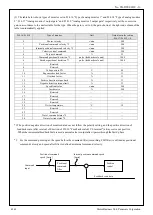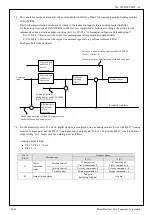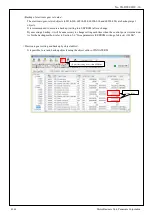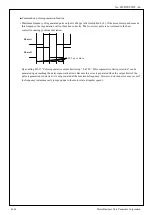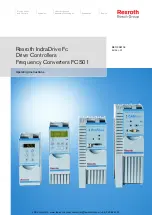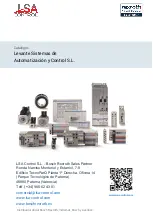
No. SX-DSV02829 -
31-
(2) The table below shows types of monitor set in Pr 4.16 “Type of analog monitor 1” and Pr 4.18 “Type of analog monitor
2”. Pr 4.17 “Analog monitor 1 output gain” and Pr 4.19 “Analog monitor 2 output gain” respectively set the conversion
gain in accordance to the unit suitable for the type. When the gain is set to 0, the gain shown at the right end column of the
table is automatically applied.
Pr 4.16/Pr 4.18
Type of monitor
Unit
Output gain for setting
Pr 4.17/Pr 4.19 = 0
0
Motor velocity
r/min
500
1
Positional command velocity *2
r/min
500
2
Internal positional command velocity *2
r/min
500
3
Velocity control command
r/min
500
4
Torque command
%
33
5
Command positional deviation *3
pulse (feedback scale unit)
3000
6
Encoder positional deviation *3
pulse (feedback scale unit)
3000
7
Reserved
—
—
8
Reserved
—
—
9
Voltage across PN
V
80
10
Regenerative load factor
%
33
11
Overload factor
%
33
12
Positive direction torque limit
%
33
13
Negative direction torque limit
%
33
14
Speed limit value
r/min
500
15
Inertia ratio
%
500
16
Reserved
—
—
17
Reserved
—
—
18
Reserved
—
—
19
Reserved
—
—
20
Driver temperature
°
C
10
21
Reserved
—
—
22
Reserved
—
—
23
Travel command status *4
—
—
24
Gain selection status *4
—
—
*1 The positive/negative direction of monitor data does not follow the polarity setting, and the positive direction of
feedback scale (after reversal of direction of Pr3.26 "Feedback scale & CS reversal") always serves as positive.
When the incremental Feedback Scale is used, a normal value is output after it passes through the first Z phase.
*2 For the command pulse input, the speed before the command filter (smoothing, FIR filter) is defined as positional
command velocity and speed after filter is defined as internal command velocity.
Positional
command
filter
Position
control
Feedback scale data
+
–
Internal position command speed
[r/min]
Positional command
speed [r/min]
Command
input
R1.00
Motor Business Unit, Panasonic Corporation



